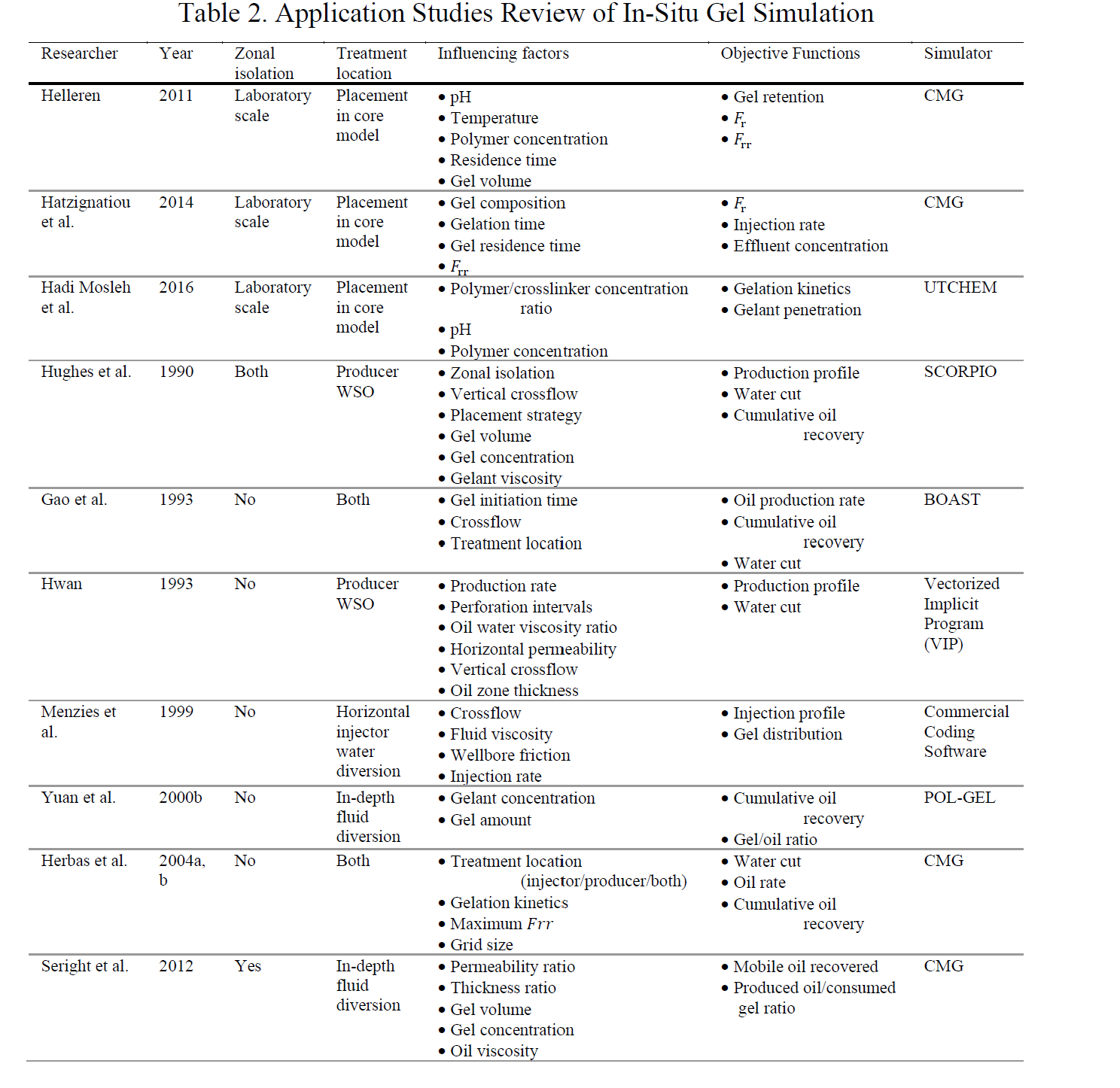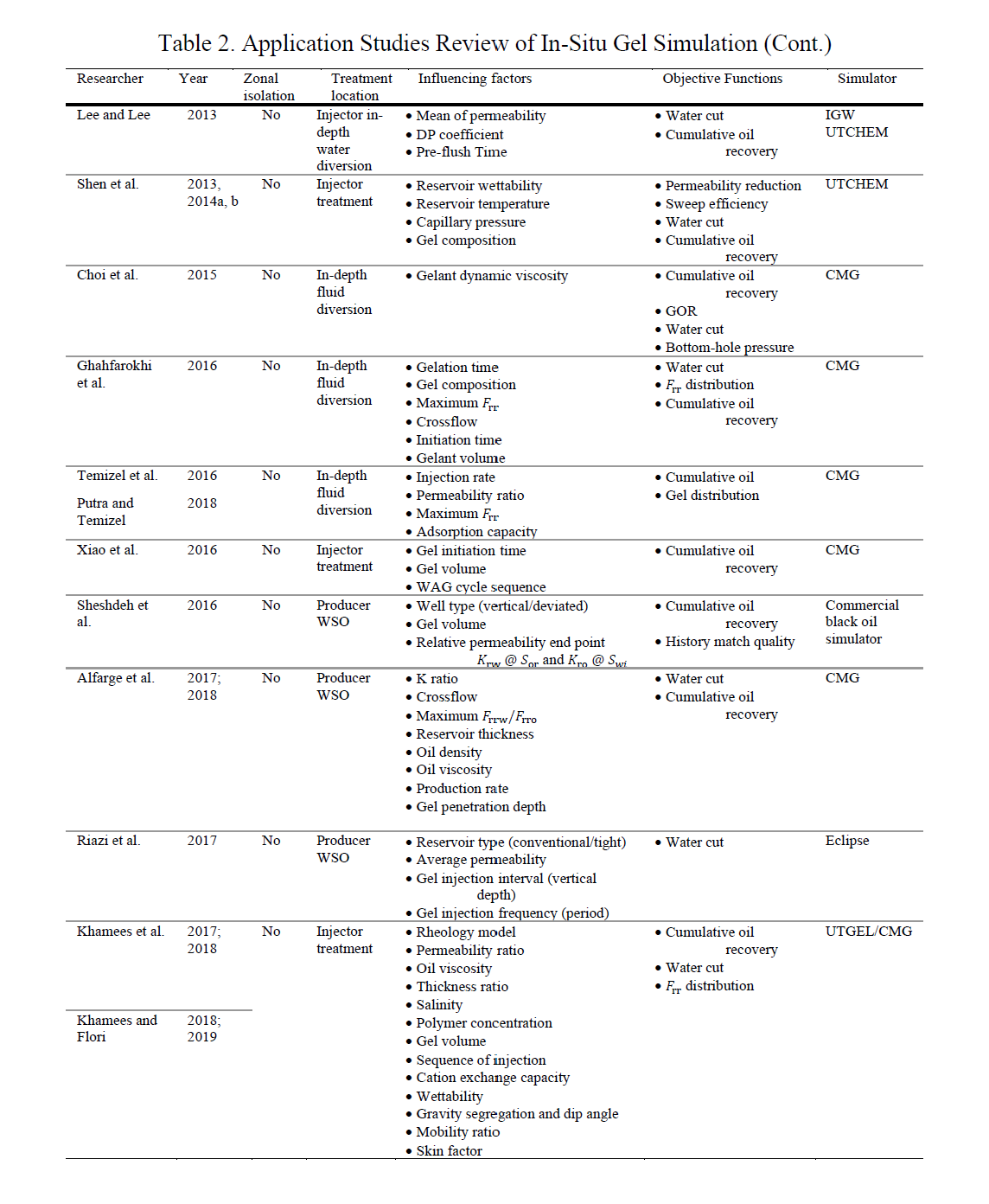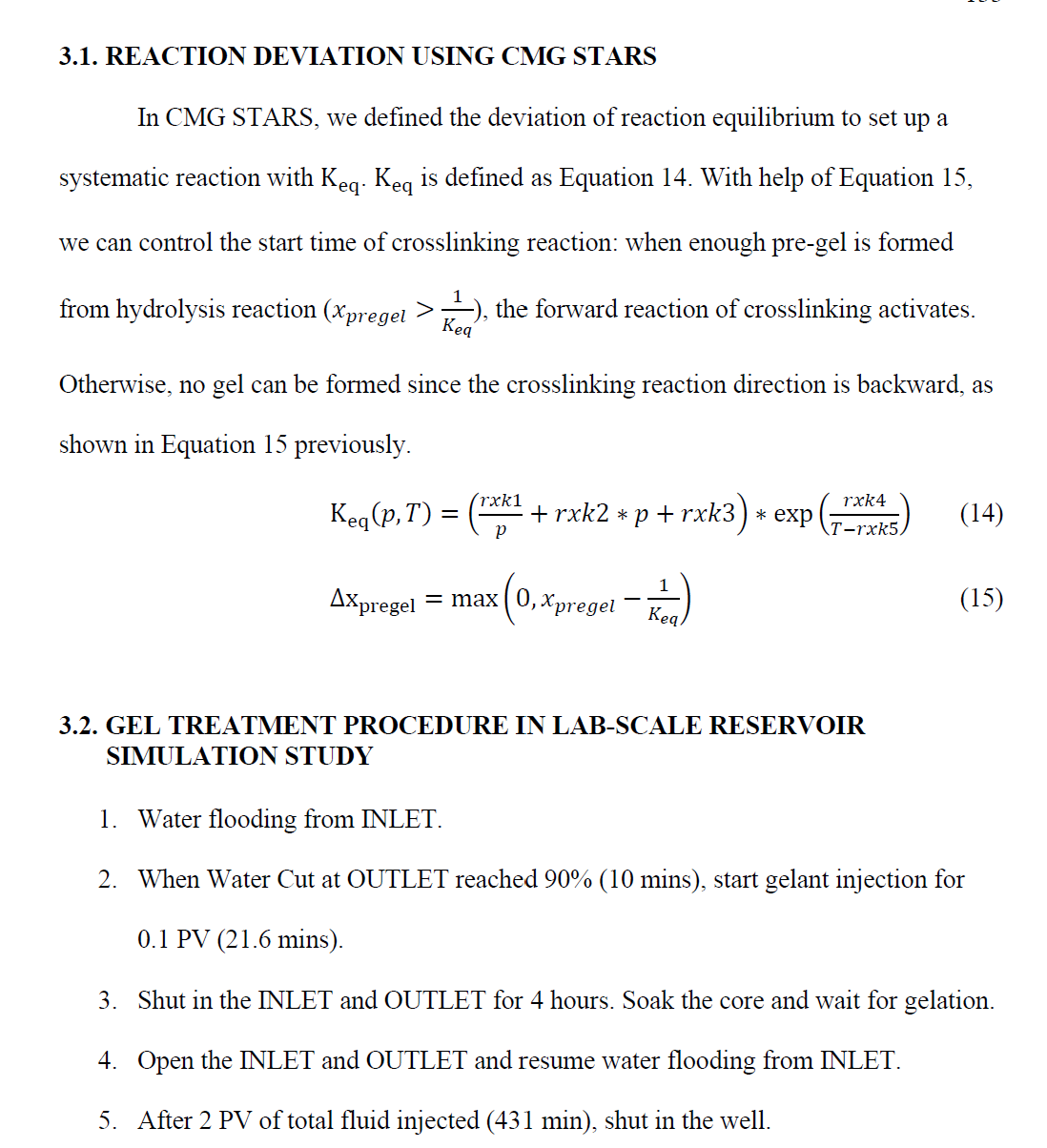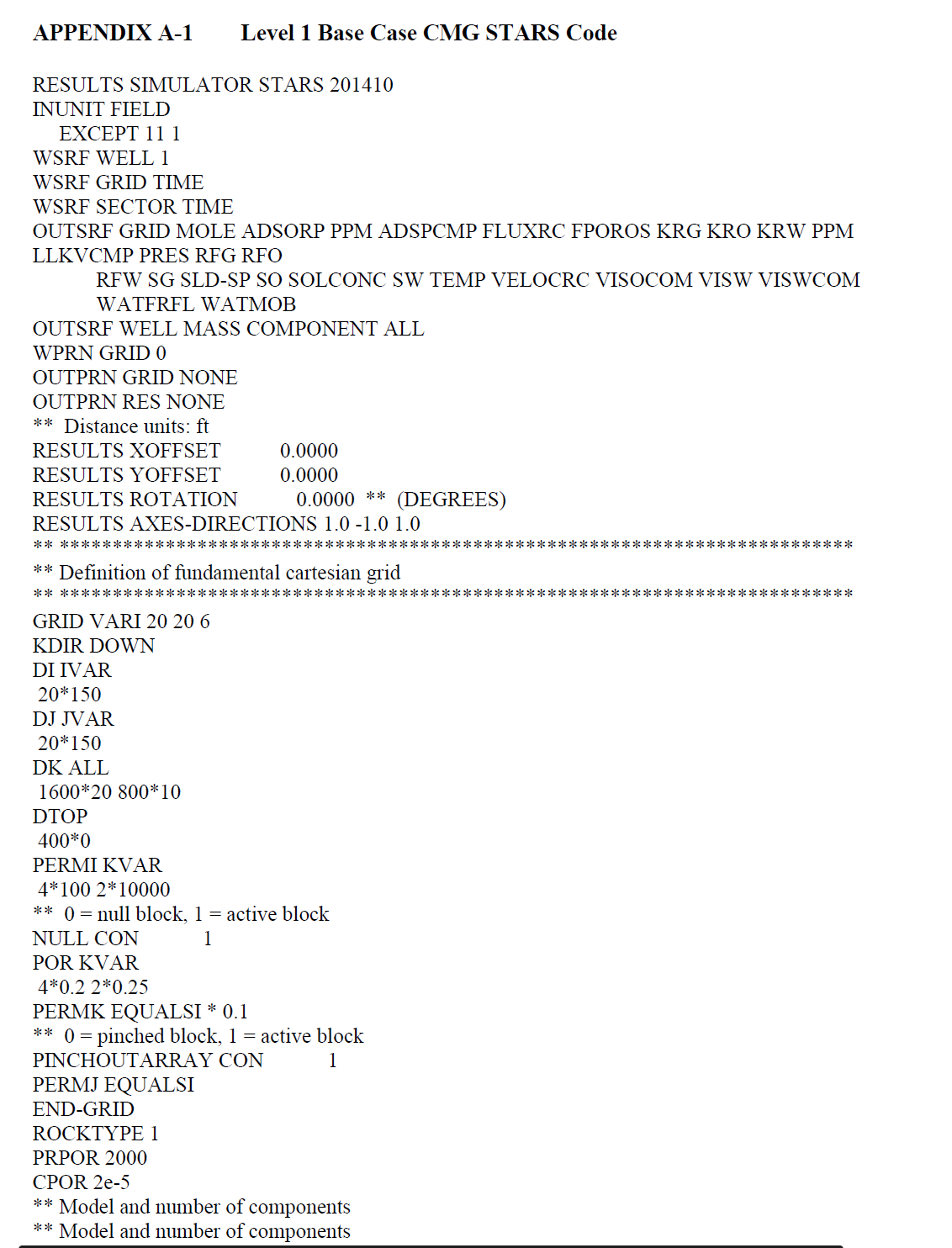Numerical simulation study of gel treatment for conformance control from lab to field
ABSTRACT Gel treatment has been widely applied to control reservoir conformance and thus improve the sweep efficiency of injection fluids. Quite a few numerical simulations have been conducted to investigate the factors impacting gel treatment and assist to optimize treatment design and predict the performance. However, there exists significant barrier between the simulation approaches and lab experiments. In this study, two comprehensive reviews have been conducted to identify the gaps between lab and current simulations for in-situ polymer treatment and preformed particle gel treatment, separately.
Based on the identified gaps, the effect of a few major factors which are very important in lab tests but have not been considered in previous simulations on gel treatment was investigated. Results showed that residual resistance factor should be considered as a function of permeability because it significantly impacts the profile modification result of gel treatment. Gelant rheology should be considered as a function of rock types, because it influenced the gelant placement and thus impacted gel treatment results. A new mathematical model was developed to consider the impact of multiple influencing factors on inaccessible pore volume (IAPV), which improved the simulation of the gelant placement. A new method was built to simulate gel extrusion in open fractures, which can consider the effect of dehydration. A decision tree model was built to present a roadmap that could be used to identify where and when gel treatment was more effective.





